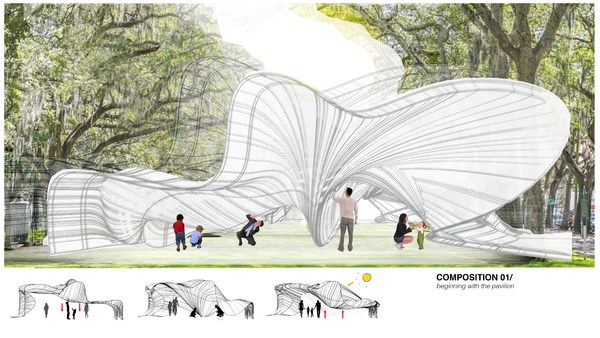As the next generation of architects, sustainability is an essential part of how we design. My interest in Advanced Practice was to explore how we can use new software/materials to reduce our impact on the environment. Starting with my pavilion design, I experimented with material properties, using an exciting development in memory metals to create a pavilion concept that was responsive to the environment without needing electronics. I enjoyed creating a fun and interactive design, I tried to portray this using my photoshop skills in the compositions. The next step was to take an idea and develop it into a highrise concept. Over the Christmas break, I used the group eVolo competition as a chance to learn how this concept of responsive architecture could be applied to buildings, developing a kinetic facade which responded to a hot/humid environment by orientating panels depending on the sun. Going into my high-rise concept, I began by using modelling software to understand the site and maximise the environmental drivers. The form minimises footprint on the city while allowing sunlight to penetrate deep into the residential apartments. The second image shows this journey of my form from an initial drawing, along with the progression of my modelling skills. A CLT structure creates two carbon-negative residential towers with biophilic spatial qualities and maximised views around the city. Over BA3, I have progressed in my modelling skills and enjoyed an alternative approach to how I design, understanding the larger implications on the site/environment and hope I can develop this with experience on live projects in practice.


